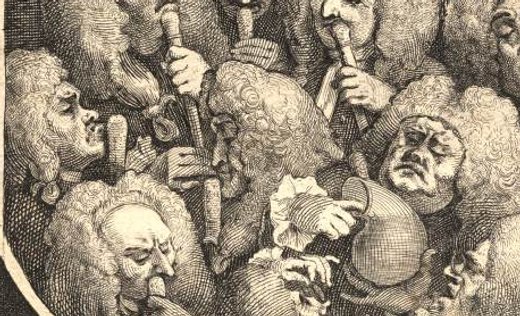- About
- Visiting
- What’s On
- Venue hire
- Catalogues
- Collections
- Belle Vue – search archives catalogue
- Digital Resources
- Art Treasures Examiner of 1857
- Manchester Association for Constitutional Order
- The North Western Museum of Science and Industry: Some Reminiscences by Richard Hills
- Criminal Manchester
- The Cup of Destiny
- Athenaeum Souvenir
- Middle English Manuscripts
- Manchester and Liverpool of Today
- Hollingworth’s Mancuniensis
- Memoir of Cecil Wray
- William Seward’s Diary
- The Anti-Monopolist
- Fishwick’s History of Rochdale
- Knyvett’s Defence of this Realm
- Tractatus de Nigromantia
- Axon Ballads
- Prints and Photographs
- 101 Treasures of Chetham’s
- Printed Books & Ephemera
- Archives & Manuscripts
- Blog
- Support us
William Hogarth

This collection of engravings and etchings by William Hogarth (1697-1764) appears to have belonged to the Manchester collector John Leigh Philips whose library and collection of prints and paintings was sold after his death in 1814.
The collection was contained in a large scrapbook measuring 63 x 47 cm. A total of 190 prints had been pasted onto both sides of fifty leaves on paper which had become acidic and brittle. The prints themselves have been cut down, but in most cases without affecting the impression of the plates.
The scrapbook has now been disbound (after a record was made of its original order), and the prints deacidified, cleaned and matted so that readers may consult them without damaging the prints. Catalogue records exist for some of these images, or sets of prints. Please contact us if you have trouble finding the information you need.
The scrapbook opened with: Ebenezer Forrest, An account of what seemed most remarkable in the five days peregrination of the five following persons, viz. Messieurs Tothall, Scott, Hogarth, Thornhill, and Forrest. Begun on Saturday, May 27th, 1732, London: printed for R. Livesay, 1782, containing 10 pages of letterpress and aquatints based on Hogarth’s drawings, published well after Hogarth’s death. It then proceeds to both large and small engravings, including many of his best known works, and also a number of early works undertaken as book illustrations. For the most part the prints are good early impressions, taken during Hogarth’s life and thus subject to his artistic control.
The prints include, among others, complete sets of the key works of the Hogarth canon – An Election Entertainment (1758), Marriage a la Mode (1745), A Rake’s Progress (1735), A Harlot’s Progress, The Four Times of the Day (1738), Beer Street, Gin Lane (1751), Stages of Cruelty (1751), and Industry and Idleness (1747). In addition, there are a number of engravings after Hogarth by other artists and a wealth of minor material.
